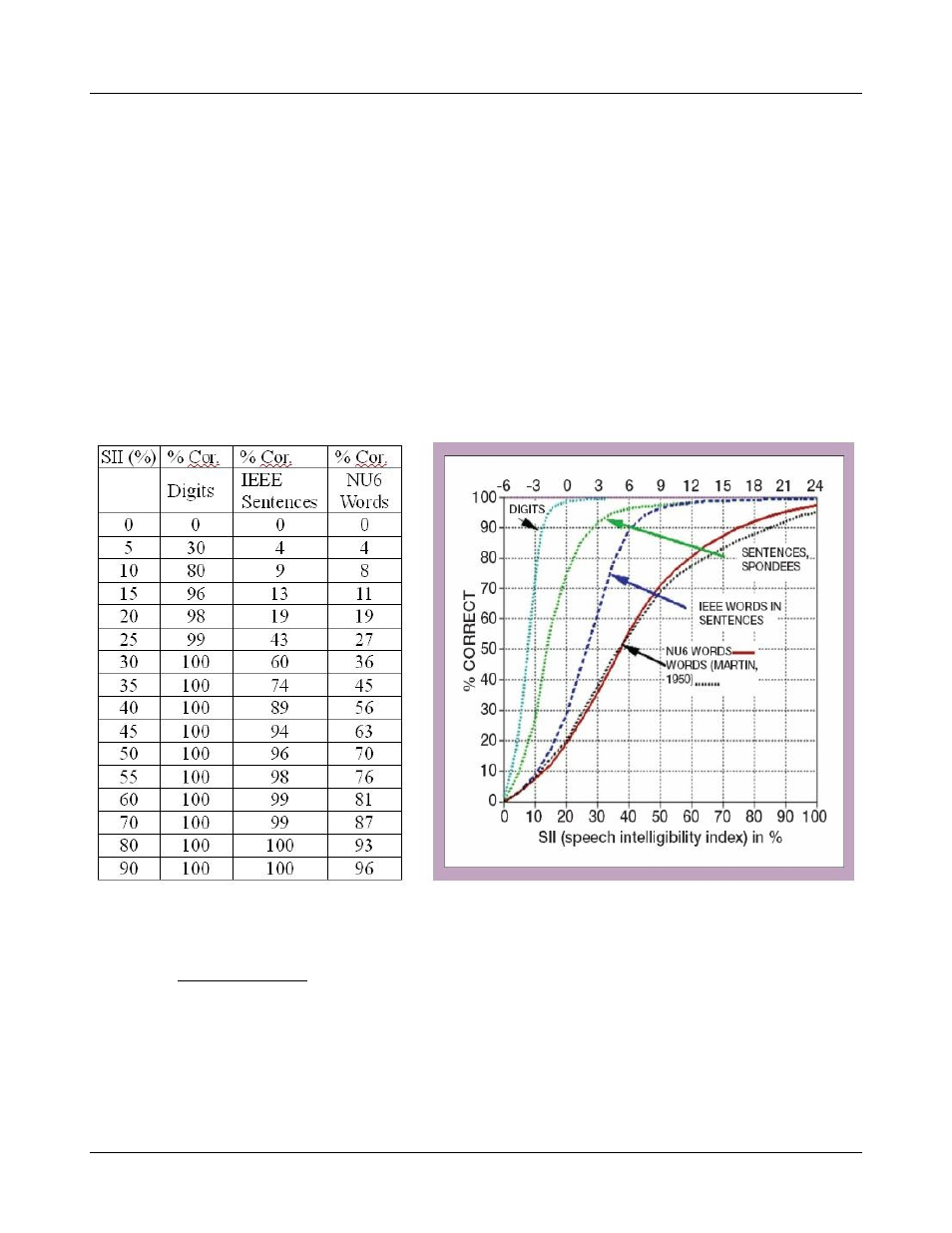Sii calculation in insertion gain, Cros fitting using insertion gain – Audioscan Verifit User Manual
Page 89

Verifit
®
User's Guide Version 3.12
May 2015
NOTE: Because it is analyzed in 1/3 octave bands, the Noise stimulus produces a REAR up to 12 dB below that
produced by the Swept stimulus at the same overall level. The REIGs will be similar except at levels which
cause non-linear operation of the hearing instrument.
SII calculation in Insertion gain
The Verifit calculates a Speech Intelligibility Index (SII) value for unaided speech at 70 dB SPL (REUR), the
target REIG and for each aided test. The calculations use the 1/3 octave band method of ANSI S3.5 –1997
without the 160 Hz band and without masking effects with results expressed as a % by multiplying by 100.
Level distortion effects are included but no hearing loss desensitization is applied. An idealized speech region of
LTASS +/- 15 dB is used.
The speech recognition associated with a given SII is a function of the test material and the cognitive abilities of
the listener. There is considerable individual variability in relating the SII to speech recognition, especially
amongst impaired listeners. The following shows expected nominal recognition scores vs SII for normals when
using a variety of speech stimulus conditions. (Killion and Mueller, Hearing Journal, January, 2010 pp 10-15).
CROS fitting using Insertion gain
See Insertion gain in SPL.
1. Place a probe module on each ear and insert the probe tube into the good ear only. Position the CROS
instruments on (in) the ears and turn them ON.
2. Position the speaker at 45 degrees to the good ear and set Instrument to [BTE].
3. Select REAR 1 and record a response using [Pink noise] at 55. It should be like a normal REUR. If not, the
ear may not be fully open.
89